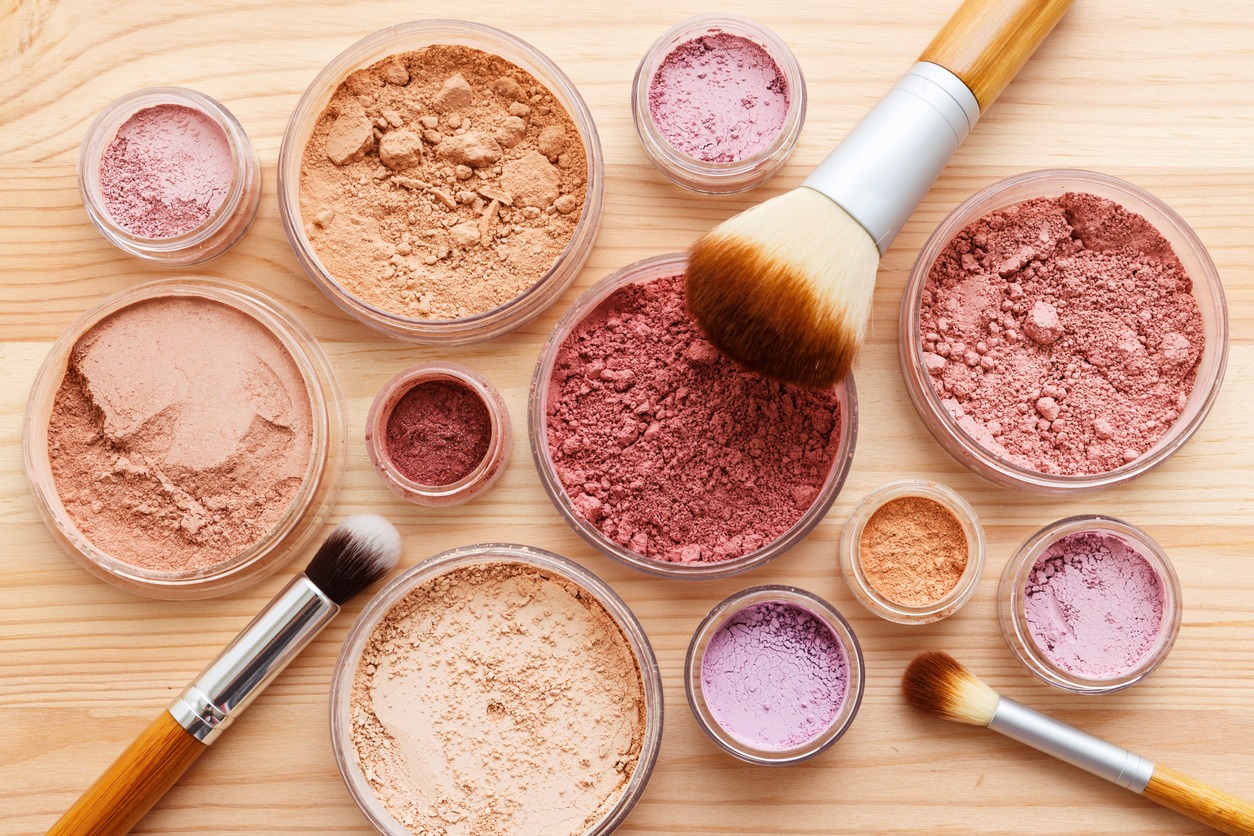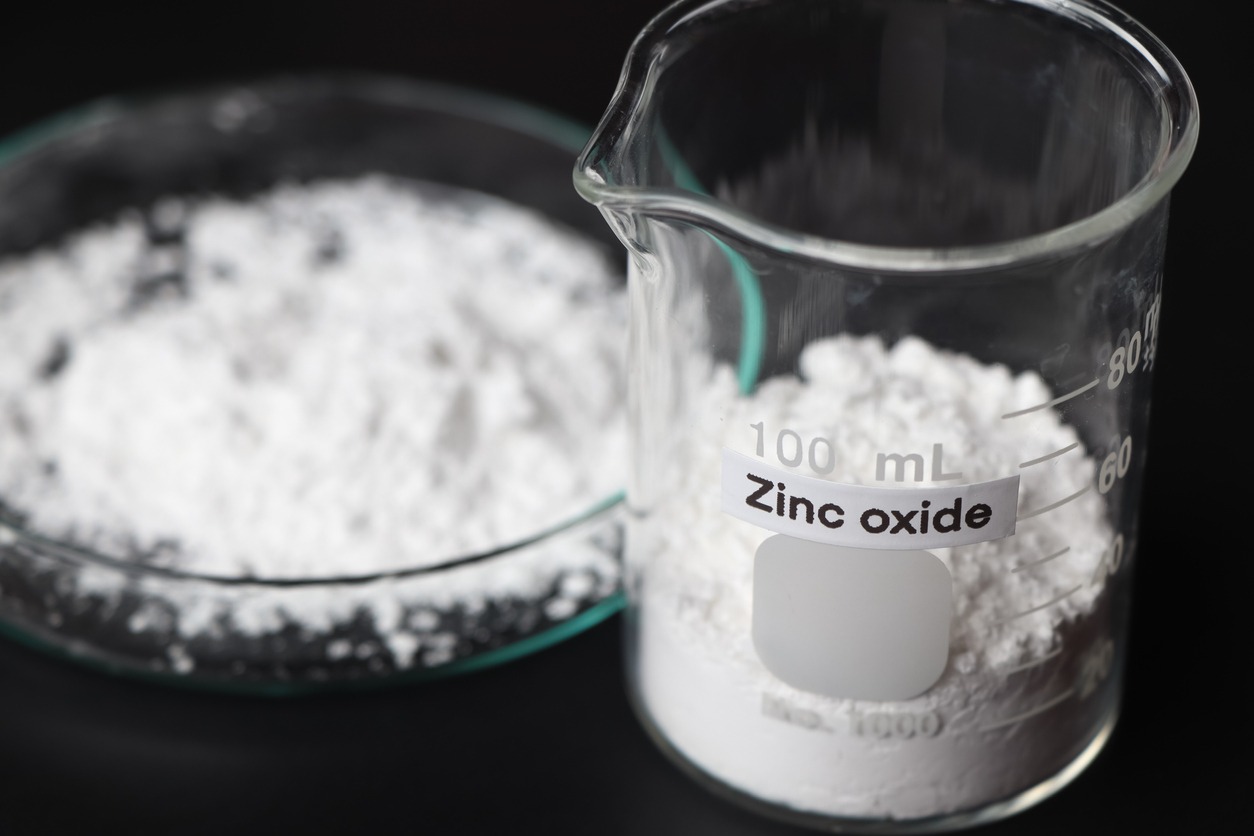Mineral makeup has gained popularity in the cosmetics industry in recent years. It sprung onto the scene with claims that it is not only lighter and better for your skin than conventional foundations and powders, but also a “natural” alternative to chemical-based products.
Mineral makeup is not to be confused with organic skincare, which is healthy for our skin and the environment. Despite the fact that mineral makeup is manufactured from finely crushed naturally occurring minerals, these are still inorganic substances, making it impossible for a mineral-based makeup to be entirely organic.
What are the ingredients in mineral- based makeup?
Mineral-based makeup contains finely powdered materials such as Titanium Dioxide, Zinc Oxide, Mica, and Kaolin Clay. It may be less irritating to the skin than conventional cosmetics. The majority of mineral cosmetics do not contain chemical colors, perfumes, or mineral oils.
It is considered to not perform or last as well due to the fact that it consists primarily of crushed rocks incorporated onto the face. When the skin is oily, these formulae cling and last, but if the face is dry or there is no liquid foundation or skin product underneath, these mineral-based formulas will slip off throughout the day, rendering them ineffective.
Moreover, many minerals are not as beneficial as you may believe. If “micronized technology” appears on an ingredient label or minerals do not have “non-nano” in front of them, the particle size is extremely small. When this occurs, the minerals are absorbed by the skin and become potentially poisonous. Be careful to seek for non-nano minerals while shopping, which is what our line contains for enhanced sun protection.
Mineral makeup is an extremely inclusive term. If we were to split hairs, we would see that practically all makeup contains minerals. This is how cosmetic colorants obtain their hue (i.e. through minerals).
Main Ingredients in Mineral Makeup
1. Titanium Dioxide
Titanium dioxide is one of the most prevalent mineral cosmetics ingredients and may be found in practically every type and brand. It is also one of the world’s most abundant minerals. In addition to being a good base for other components in mineral cosmetics, the white powdered substance also functions as a sunscreen. Although there is some evidence that inhaling the chemical can be harmful to the lungs, it is generally regarded safe. Titanium dioxide does not permeate into the skin, thus it is unlikely to create clogged pores and acne outbreaks.
This imparts exceptional coverage to our products and creates a wonderful luminosity on the skin by diffracting light. This will assist in concealing the myriad flaws that some ladies may have developed over the years, while imparting a healthy glow without shine.
2. Zinc Oxide
Due to its ability to function as a sunscreen, zinc oxide is one of the most widely used mineral makeup foundation materials. Zinc oxide is not water-soluble; hence it will not dissolve when exposed to water. While this mineral is harmless for topical use, it is poisonous if consumed; therefore, children should be kept away from mineral makeup.
It imparts smoothness and texture to minerals and imparts a sheer, translucent aspect to mineral makeup. Depending on its application, it can provide beautiful skin without irritating extremely sensitive skin.
3. Iron Oxide
Iron oxides are the most prevalent coloring agent used in mineral cosmetic products. There are numerous forms of iron oxide, including red, yellow, and black varieties. Mineral cosmetics producers utilize all three, either individually or in varying amounts. By combining iron oxides with the other base elements in mineral cosmetics, a diversity of hues is produced. In contrast to the base ingredients, iron oxide may seep into the skin, thus people with skin disorders or allergies should visit a dermatologist prior to use.
4. Clay
Clay in a variety of forms, particularly mica clay, is also used as a coloring agent in mineral makeup. Similar to iron oxide, clay is available in a variety of earth-tone hues, including brown, red, and beige, and can be diluted with the base ingredients to obtain the desired hue. Clay is normally safe for topical usage, but there are worries that inhaling it can cause respiratory issues.
Ingredients to Watch for
1. Silicones
These are typically dimethicone or cyclomethicone on a list of cosmetic ingredients. Silicones are added to skin care products to impart a velvety, smooth texture. They facilitate powder and liquid application and provide a barrier on the skin. This prevents pollutants and dirt from entering the pores. However, if used excessively or left on for too long, they can lock in bacteria, sebum, and pollutants, leaving the skin vulnerable to outbreaks. Both dimethicone and cyclomethicone are siloxane family members.
2. Phenoxyethanol
This is a common preservative in cosmetics, fragrances, and soaps. Some data suggests that phenoxyethanol is an irritant, especially for eczema sufferers. Although concerns regarding its unwanted effects are limited, genuine mineral cosmetics should not require any preservatives. If you notice this component on a makeup label, the product is likely not as “natural” as it promises to be.
3. Bismuth Oxychloride
Bismuth oxychloride is commonly used in numerous types of cosmetics. Although it is a naturally occurring metal, it is typically synthesized and processed to fulfill demand and make it safe for use on the skin. As a heavy metal, it can cause irritation, itching, and breakouts. However, it is used to give makeup a matte or shimmering finish.
4. Silica and Kaolin
Kaolin is a form of white clay commonly employed in ceramics. Silica is a naturally occurring mineral present in sandstone, clay, and granite. Due to their capacity to absorb oil and moisture, both are utilized in cosmetics. This is beneficial for individuals with oily skin types. However, if you have dry skin, you should avoid makeup containing these substances, as they will only make your life more difficult!
Safety of Mineral Makeup
Mineral makeup is commonly regarded as considerably safer than conventional makeup. It has none of the chemicals, colors, or synthetic perfumes found in other cosmetics, making it more skin-friendly. However, there are certain safety risks with mineral cosmetics, primarily with nanoparticle inhalation. Nanoparticles can be found in loose powders (such as mineral powder) and are extremely small and simple to consume by accident. When consumed, these nanoparticles can adhere to the lungs and become difficult to expel from the body. This can have the same effect on the body as swallowing asbestos, posing major health hazards such as bronchitis and lung cancer. To avoid any of the above-mentioned health dangers, it is far safer to stay with mineral creams.
To conclude
Makeup is not a contemporary innovation. People have been using clays, paints, and dyes to decorate their bodies for millennia. However, mineral makeup as we know it now is a relatively recent development. Mineral makeup is distinguished from conventional makeup by what is omitted rather than what is added. True mineral makeup contains fewer ingredients than conventional makeup, and all of these ingredients are taken from naturally occurring substances.




